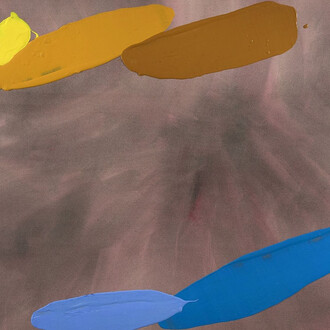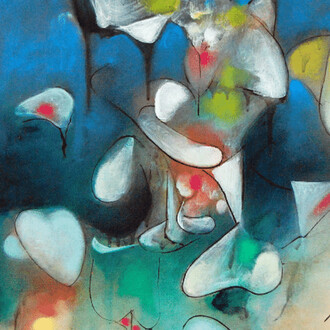I’ve been exploring combining calendrical dates with magic squares for more than 25 years. I’m identified as a person with some Asperger’s traits. Functional MRI have shown that my brain is wired slightly differently; it seems to have unusual activity that results in some innate math, memory, and drawing skills. I’ve calculated dates and specific number systems since I was a child. I’d see common numbers around me (a license plate, a house number) and immediately transform them into dates.
Magic squares, in the traditional mathematical sense, are grids of integers whereby all rows and columns add up to an identical sum. I extrapolated this concept and created the world’s first “magic time square,” where dates are fitted in alignment with the magic square integers—making the dates add up to an identical sum instead. The next challenge was to create dates that not only resulted in an identical overall sum, but that reflected a common theme. For example, I might fit natural disasters to the above magic square and find hurricanes that not only fit the integers but also occurred on Fridays. This idea has appeared in my past work in various ways: I created stacks, sequences, and progressions of dates using similarities and differences.
The resulting “Magic Circles” series reflects my interest in the future development of artificial intelligence (AI). In a non-dystopian future, I believe people and machines will have prodigious memory and calculation capabilities—via biological or technical improvements. Machines will become a new species with higher creative intelligence and humans will be enhanced with skills that seem implausible today. I envision these magic circles as a form of recreation, because they allow the user to “program” them; to choose a specific theme and then fit the provided days of the week with appropriate dates. Not so easy for us, but real entertainment if you have unlimited memory and knowledge of all past historical events.
When artificial intelligence occurs, these “crossdate” or “crosstime” puzzles will become feasible games and then hopefully they’ll be awakened.
George Widener was born in Cincinnati, Ohio (1962) and was identified as a “lightning calendar calculator” from a young age. He enlisted in the U.S. Air Force at age 18 and soon became obsessed with historical dates and automatic memory drawing. Since then, he focused solely on creating a counting system documented in his notebooks—making drawings for more than a decade before anyone saw them. In the late 1990s Widener was diagnosed with Asperger’s syndrome and enrolled in a Tennessee State vocational rehabilitation program, where he was discovered—leading to the introduction of his work to the art world. Widener creates mixed-media works on paper featuring bold palettes and patterning. His oeuvre represents a visual exploration of possible numerical systems or mind games based on historical events and dates. Widener has been exhibited extensively worldwide, including “Hiding Places: Memory in the Arts” (John Michael Kohler Arts Center, 2011), “The Alternative Guide to the Universe” (Hayward Gallery, London 2012), and “Secret Universe” (Hamburger Bahnhof, Berlin 2013). The artist’s work is in the collections of the Smithsonian American Art Museum (Washington, D.C.), The Philadelphia Museum of Art, The High Museum of Art (Atlanta, Georgia), The American Folk Art Museum (New York), the Collection de l'art brut (Lausanne, Switzerland), The Kröller-Müller Museum (Otterlo, Netherlands), The Treger Saint Silvestre Collection (João da Madeira, Portugal), and the Hamburger Bahnhof National Museum (Berlin, Germany), among others.
















